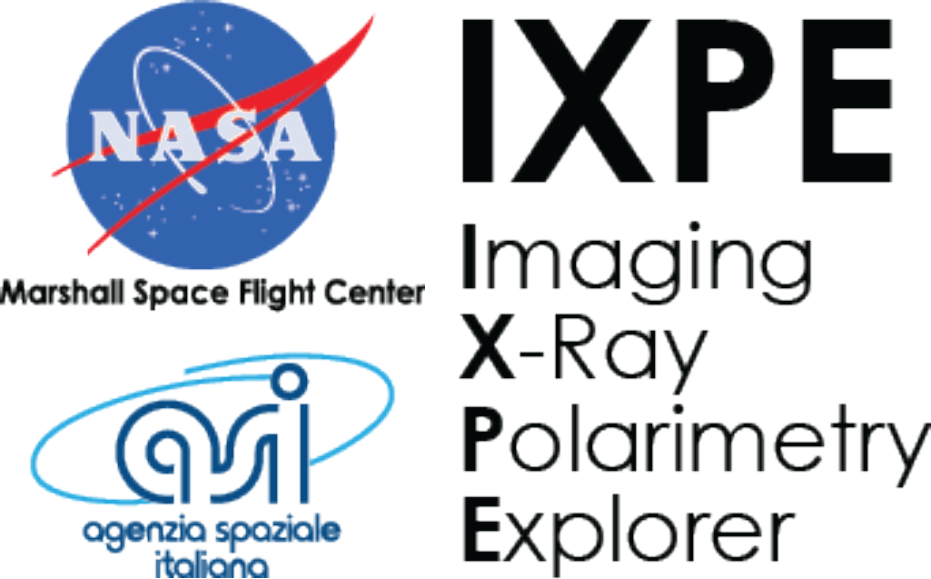Data Challenge 1¶
The photon lists for the first IXPE Data Challence (DC1) were released on June 1, 2021. (The data repository contains exactly three files per observation—one for each of the three telescopes.)
All the input models have been merged into the main ixpeobssim repository as of version 16.16.0, and this page is acting as the documentation for them.
All the model files live in the usual ixpeobssim/config directory.
Pulsar ephemeris¶
Based on the consideration that, under most circumstances, the ephemeris for known periodic sources will be available when IXPE observes the target, we provide below those used for the simulation for the two pulsars involved in the data challenge.
PSR J1708-4008¶
* Source name: PSR J1708-4008
* R. A. : 257.204167
* Dec. : -40.152778
* Epoch MJD : 59823.000000 (MET 178761600.000 s)
* nu0 : 0.090798237 Hz
* nudot0 : -1.598360e-13 Hz s^{-1}
* nuddot : 0.000000e+00 Hz s^{-2}
RX B1509-58¶
* Source name: RX B1509-58
* R. A. : 228.481333
* Dec. : -59.135778
* Epoch MJD : 59611.000000 (MET 160444800.000 s)
* nu0 : 6.572649741 Hz
* nudot0 : -6.582043e-11 Hz s^{-1}
* nuddot : 1.918559e-21 Hz s^{-2}
Multi-wavelength context¶
For Mrk 421 we do have quasi-simultaneous optical polarization information available for the six IXPE observations, as listed in the following table.
MJD |
R [mag] |
Pol. Degree [%] |
Pol. Angle [deg] |
|---|---|---|---|
59692.904 |
12.53 +/- 0.05 |
2.60 +/- 0.20 |
39.3 +/- 3.0 |
59706.556 |
12.51 +/- 0.05 |
2.88 +/- 0.20 |
47.6 +/- 3.0 |
59720.754 |
11.97 +/- 0.05 |
6.01 +/- 0.20 |
-47.1 +/- 3.0 |
59728.883 |
12.44 +/- 0.05 |
3.14 +/- 0.20 |
41.0 +/- 3.0 |
59734.496 |
12.44 +/- 0.05 |
2.82 +/- 0.20 |
42.2 +/- 3.0 |
59748.431 |
12.49 +/- 0.05 |
3.40 +/- 0.20 |
41.5 +/- 3.0 |
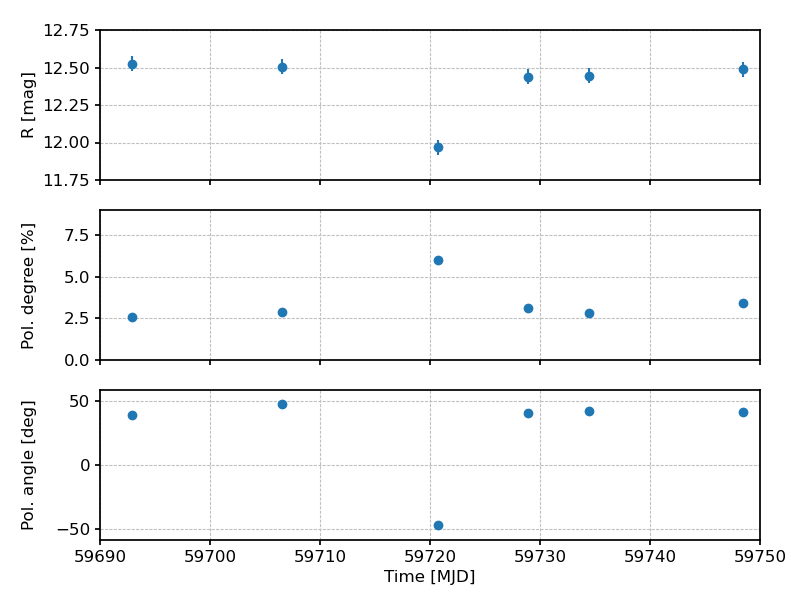
Quasi-simultaneous optical polarization for Markarian 421.¶
Observing Plan¶
Cygnus X-1¶
Source: Cygnus X-1 in the hard state
Observation pattern: single ~300 ks observation
Observation start: 2022-04-01T00:00:00.000000
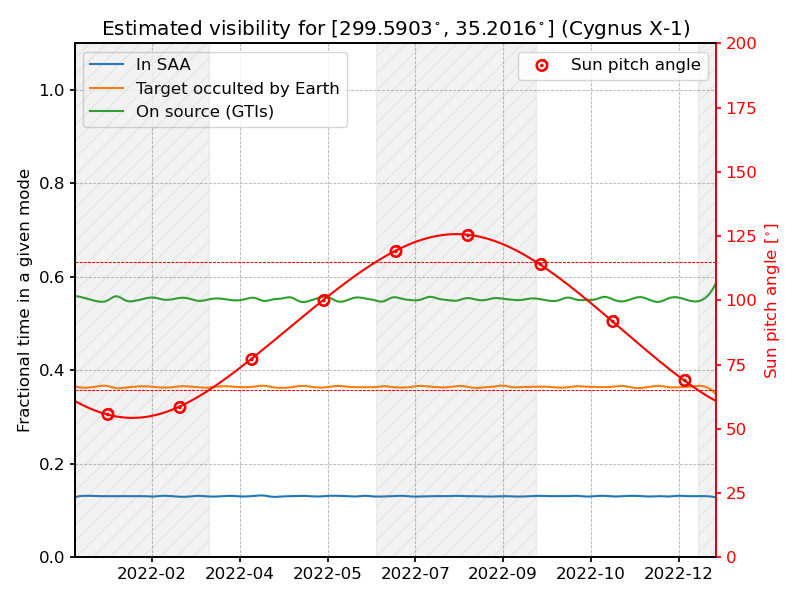
Visibility for Cygnus X-1 in 2022.¶
Spectral Model¶
The spectral model for Cygnus X-1 in the hard state is taken from Parker at al., 2015 (Figure 6 and Table 4). In the IXPE energy range this includes three components:
a comptonization component (eqpair);
a reflection component (relxilllp);
a narrow line at 6.4 keV.
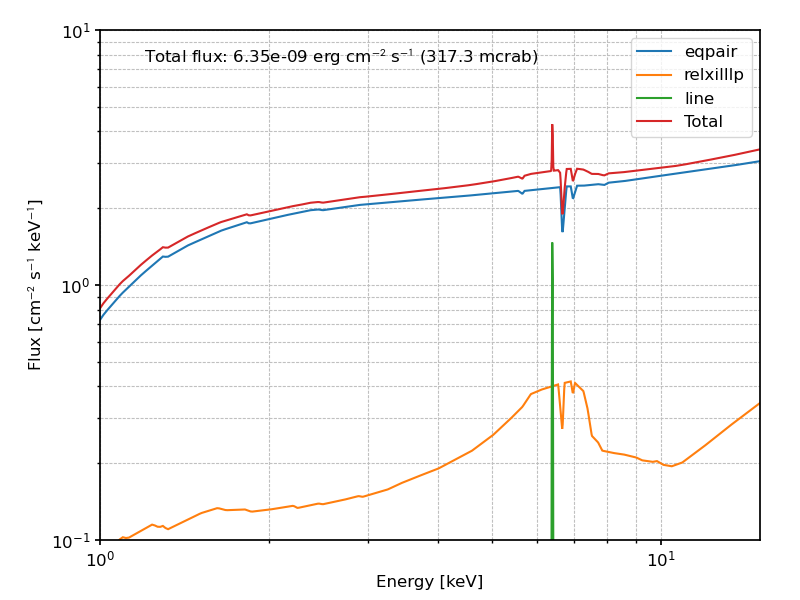
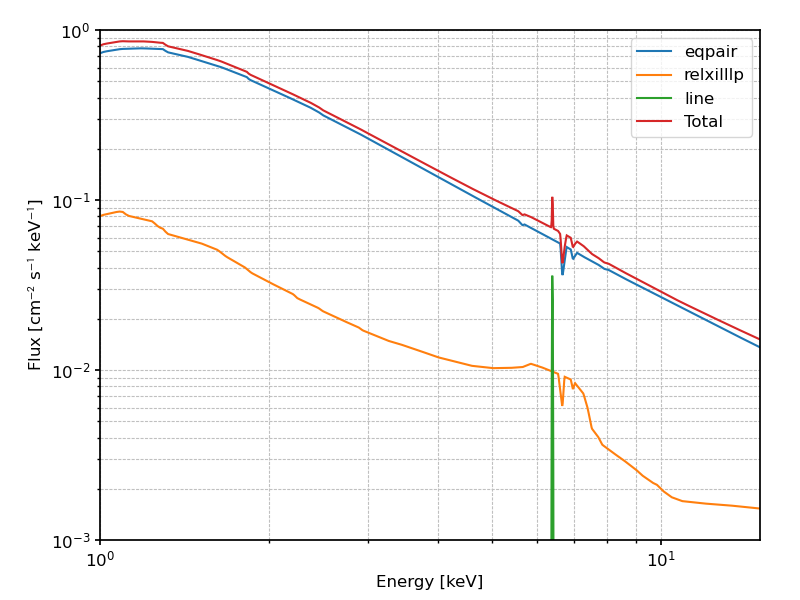
Input spectrum.¶
Polarization Model¶
Giorgio suggested to use a 1–2% polarization degree for the main (eqpair) component, with an arbitrary angle, and a 2% polarization degree, oriented at 90 degrees, for the reflection component. The line should be unpolarized.
Also, he suggested not to include any temporal variability.

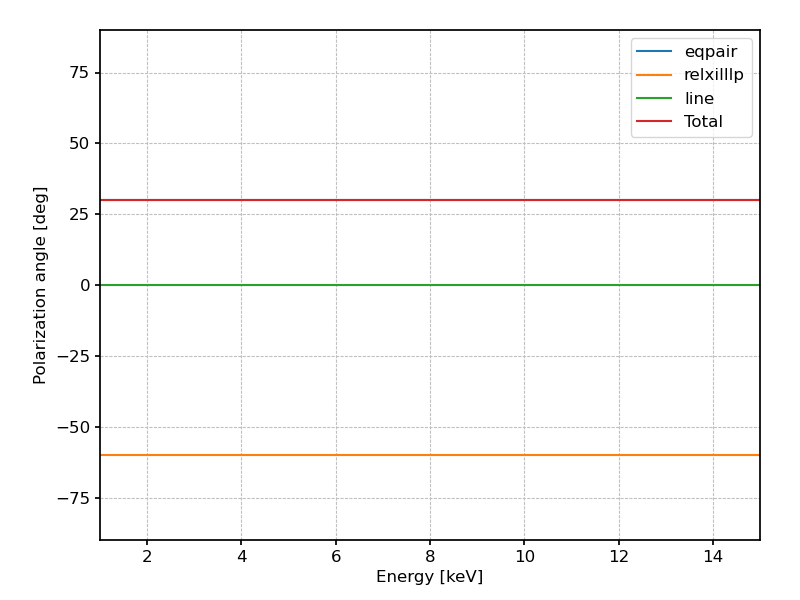
Polarization model.¶
For completeness, here is an MDP table for the brightest source component.
xPointSource "eqpair" (id = 0)
Galactic column density: 5.100e+21 cm^{-2}
Redshift: 0.000
Unabsorbed flux @ t = 0: 4.832e-09 erg/cm2/s (241.60 mcrab)
Position: RA = 299.59031591 deg, Dec = 35.20160625 deg
MDP table for 300000.0 s observation time
2.00--2.83 keV: 4407218.0 counts, effective mu = 0.236, MDP = 0.87%
2.83--4.00 keV: 2484315.3 counts, effective mu = 0.380, MDP = 0.72%
4.00--5.66 keV: 891665.1 counts, effective mu = 0.473, MDP = 0.96%
5.66--8.00 keV: 231725.5 counts, effective mu = 0.564, MDP = 1.58%
2.00--8.00 keV: 8014923.9 counts, effective mu = 0.316, MDP = 0.48%
Markarian 421¶
Source: Markarian 421
Observation pattern: six ~50 ks observations spaced by ~two weeks
Observation start:
2022-04-23T00:00:00.000000 (obs_id 1)
2022-05-07T00:00:00.000000 (obs_id 2)
2022-05-21T00:00:00.000000 (obs_id 3)
2022-05-28T00:00:00.000000 (obs_id 4)
2022-06-04T00:00:00.000000 (obs_id 5)
2022-06-19T00:00:00.000000 (obs_id 6)

Visibility for Markarian 421 in 2022.¶
The input model for Markarian 421 comes with two independent components that we shall refer to as Faint and Bright, respectively.
Spectral Model¶
The two spectral components are modeled as simple power laws with a normalization that varies in time and fixed spectral indices.
The Faint component features a moderate secular variation of the order of 10% of the average values, randomly generated with an interpolated cubic spline.
The Bright component has a negligible baseline, and a prominent peak (shaped like a gamma function) more or less at the center of the observation. Its spectral index is significantly harger than that of the Faint component.

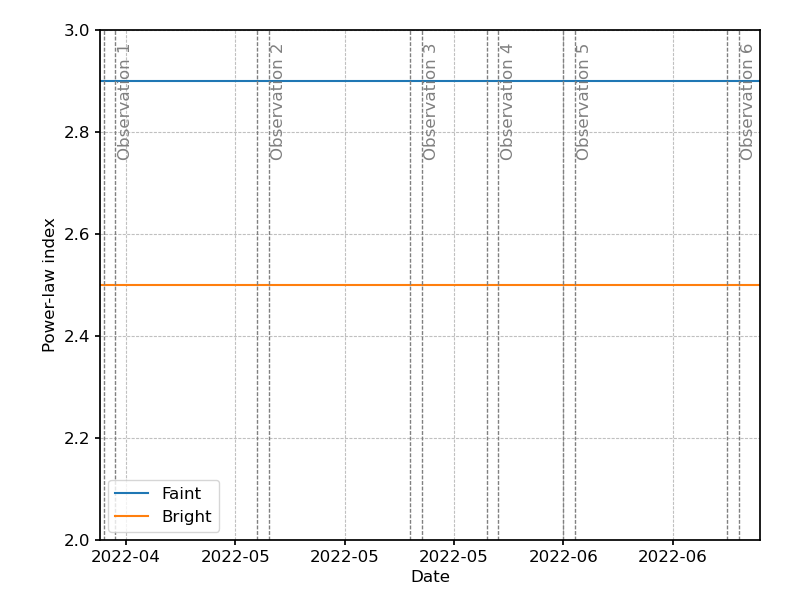
Power-law normalization and index for the two model components as a function of time, for the target observation period. (The gray vertical lines indicate the six observations.)¶
Below is the integral flux in the IXPE band for the two components and for their sum.

Integral flux for the two model components as a function of time, for the target observation period. (The gray vertical lines indicate the six observations.)¶
Polarization Model¶
Both components feature a polarization degree increasing with energy over the IXPE band—roughly speaking the polarization degree doubles moving from 3 to 10 keV. The polarization vectors for the two components are orthogonal to each other.
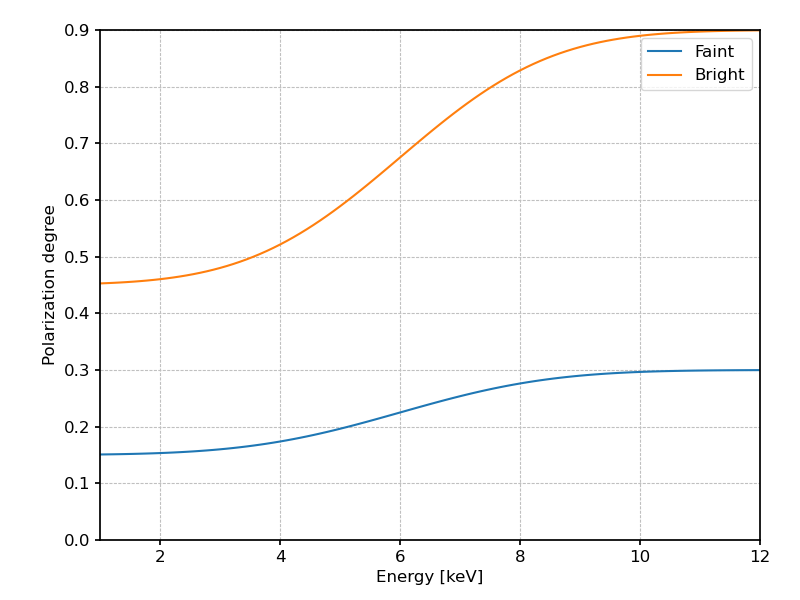
Polarization degree as a function of the energy for the two coponents.¶
Although neither polarization component has an explicit time dependence (both the polarization degree and polarization angle do not depend on time), the fact that they are orthogonal generates interesting effects as the corresponding spectra evolve with time. The specific profile of the Bright component and the actual observation intervals have been admittedly cherry picked to maximize the variety of combination we observe.
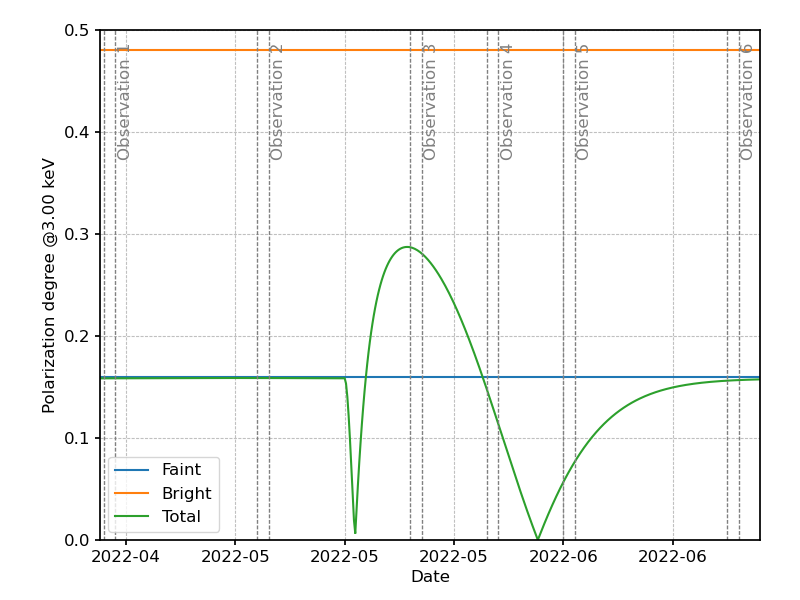
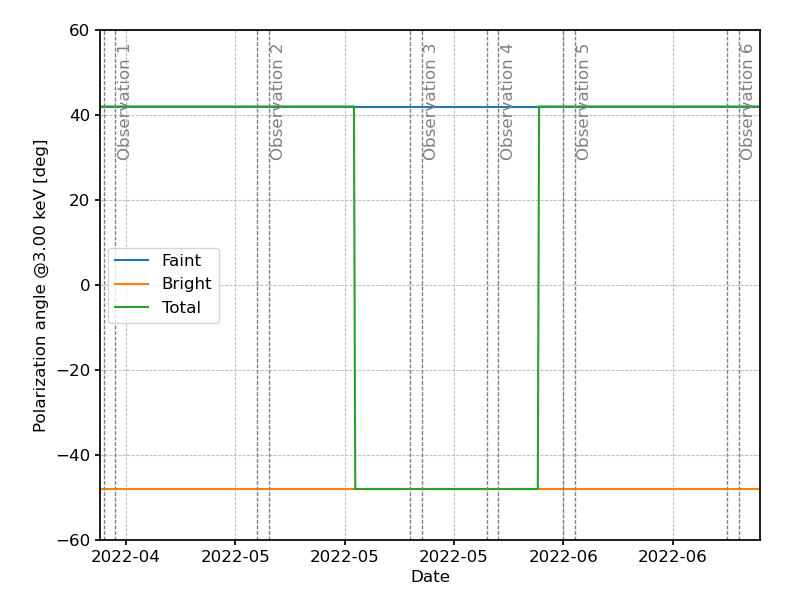
Polarization degree and angle at a fixed energy (3 keV) as a function of time. (Note this is representative of the polarization at the peak of the sensitivity, but it is only a proxy of the broadband polarization we will measure in real life.)¶
MSH 15-52¶
Source: MSH 15-52
Observation pattern: single 1.5 Ms observation
Observation start: 2022-02-01T00:00:00.000000

Visibility for MSH 15-52 in 2022.¶
Morphological and Spectral Model¶
The basic morphological and spectral model for the nebula comes from a Chandra
event list, that we feed into ixpeobssim to be folded with the IXPE
response functions.
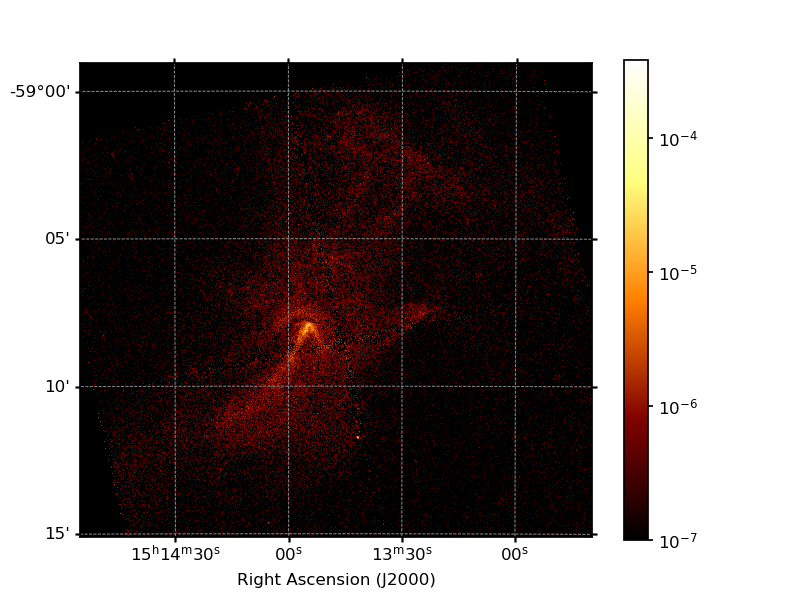
We cut out a small region at the position of the pulsar to avoid any problem with pile up in Chandra and plug in our own pulsar model.
Polarization Model¶
The baseline polarization model was created by Niccolo Bucciantini.
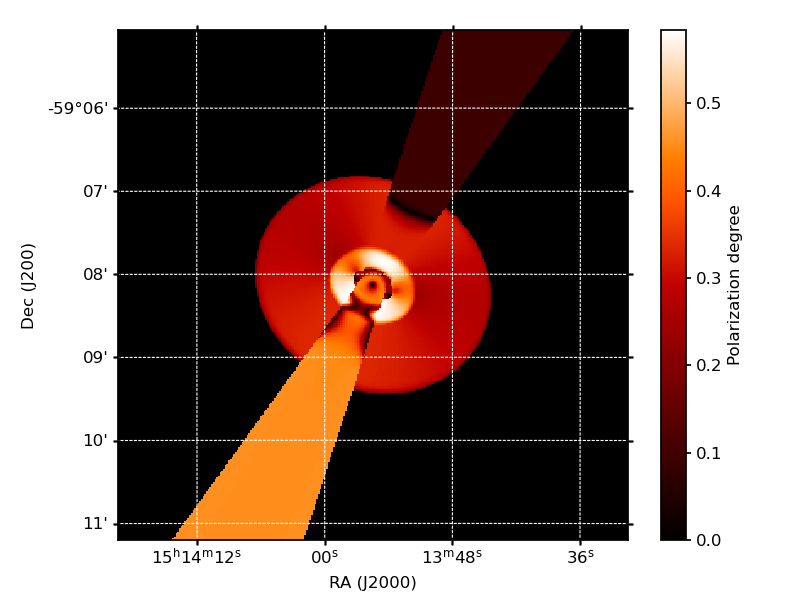
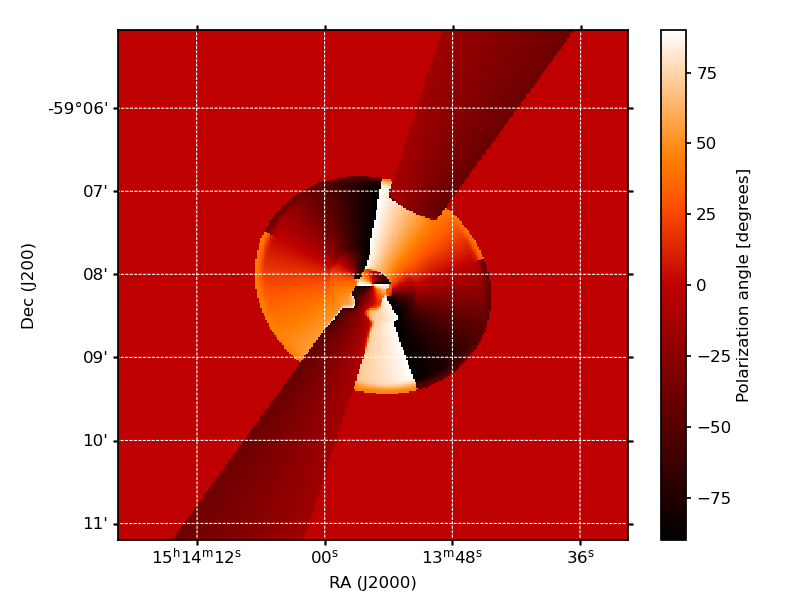
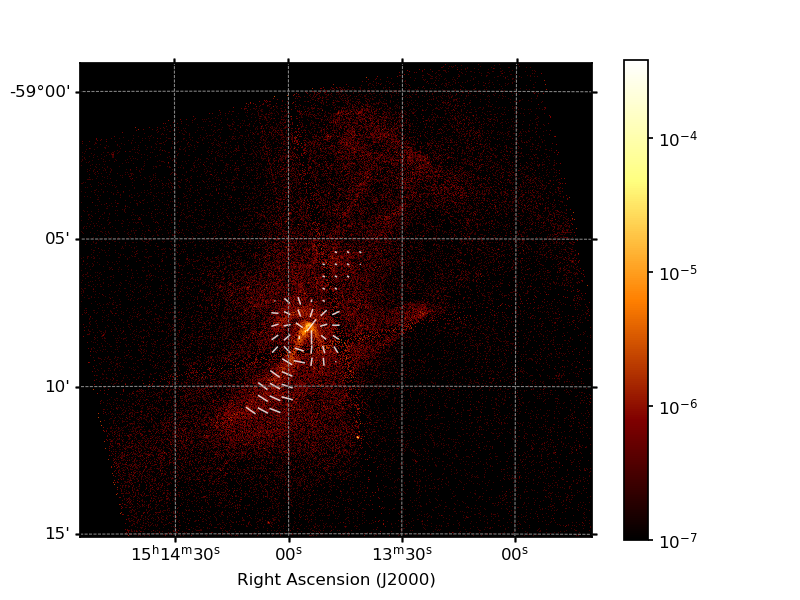
The PSR B1509-58 Pulsar¶
The pulsar is located at R.A. = 228.48133333, Dec. = -59.13577778. The basic input for the modeling comes from the NuSTAR observation Ge Chen at al., 2015, where a full phase-resolved spectral analysis is available.
We use a simple power-law parametrization, with a purely phenomenological phase-dependence of the index, as illustrated in the figure.
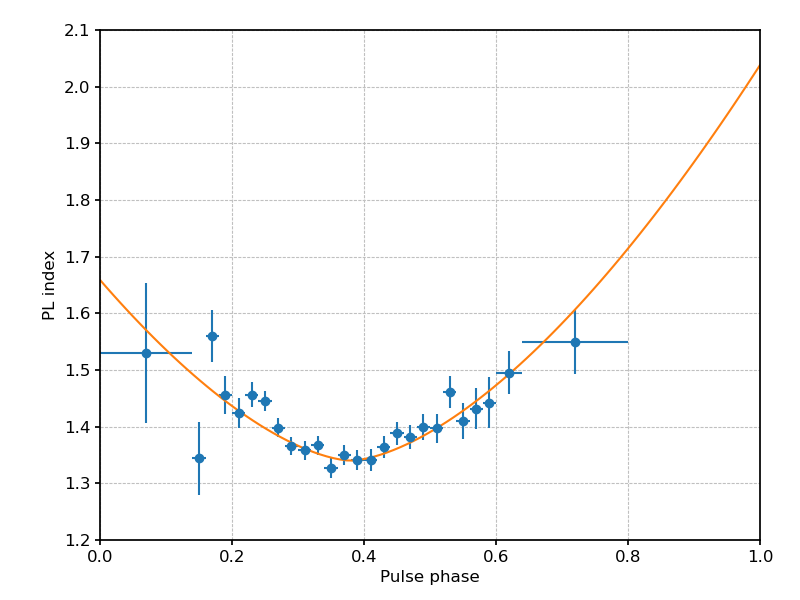
The ephemeris are taken from Livingstone and Kaspi, 2011:
Dates (Modified Julian Day) 50148.096–55521.082
Epoch (Modified Julian Day) 52834.589000
nu 6.611515243850 s-1
nudot0 −6.694371307e-11 s-2
nuddot 1.9185594e-21 s-3
The polarization degree for the pulsar is taken as 35%, independently from the pulse phase, with a polarization degree vs. pulse-phase profile provided by Roger:
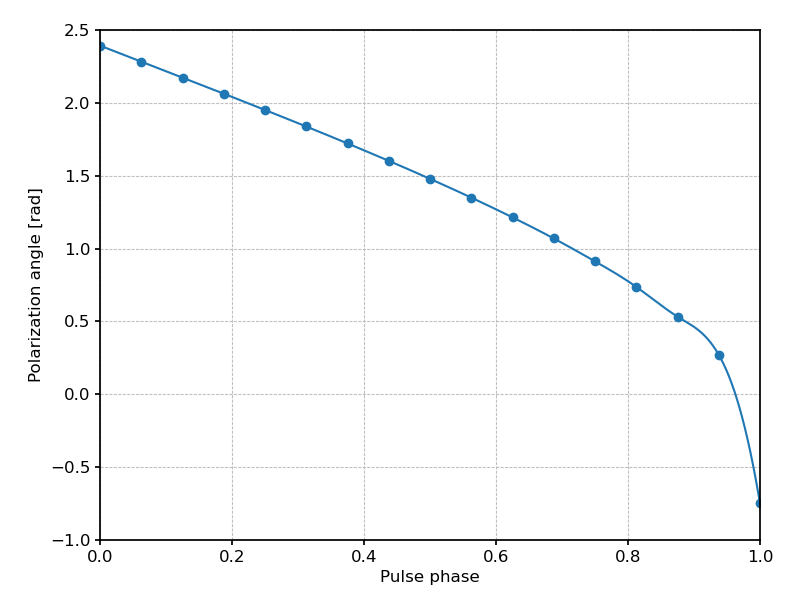
RX J1708-4008¶
Source: RX J1708-4008
Observation pattern: single 1 Ms observation
Observation start: 2022-09-01T00:00:00.000000
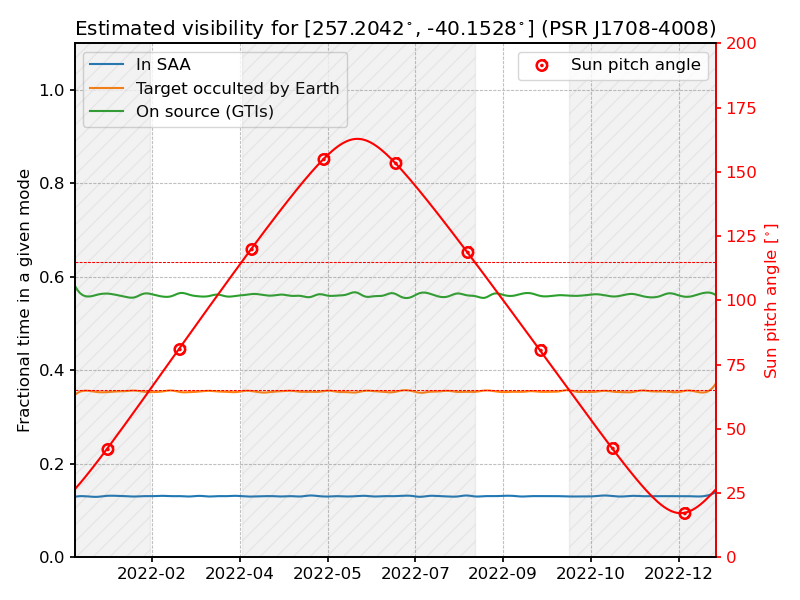
Visibility for PSR J1708-4008 in 2022.¶
